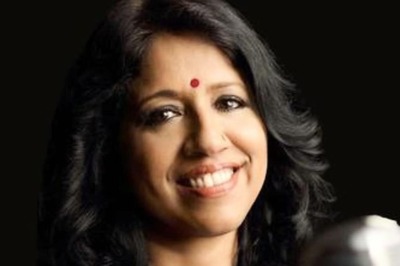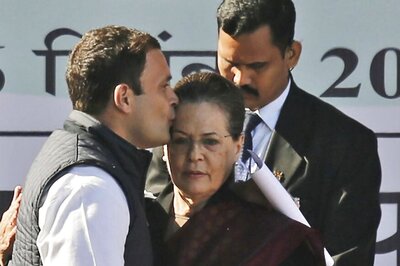
views
X
Research source
Some Muslim symbols are easy to recognize, like the crescent and star, while others are lesser known. Whether it be for religious reasons or curiosity alone, learning about these emblems reveals that they carry a ton of historical and cultural significance. If you’ve ever wondered what some of the most popular Muslim symbols are and what they mean, here is a comprehensive guide.
The Crescent
The Crescent may be the most identifiable symbol relating to Islam. However, its origins are not thought to be religious. The crescent has always symbolized the moon, and dates back to ancient Sumer and Mesopotamia. The moon represents the female divine, while the sun represents the male divine. The crescent is present in Akkadian documents as early as 2300 BC.
During the Byzantine Empire, mysticism and folklore shrouded the crescent. Allegedly, the ancient city of Byzamtium, which later became Constantinople, was saved by the sudden appearance of the moon as a surprise attack was underway. It’s also possible that the emergence of the crescent symbol in that part of the world had a military origin, created by the shape of two horns or claws joining together.
Despite its mysterious beginnings, the crescent has become an Islamic symbol. Today, it’s depicted on many flags where Islam is a major religion, including Algeria, Tunisia, Malaysia, and Pakistan.
The Crescent and Star
The crescent and star have origins in the ancient world. First found in Byzantium, this iconic combination dates back to about 300 BC. The duo later appeared on coins and continued to be widespread in the region. These two symbols have no actual correlation to the tenets of Islam, unlike the cross for Christians. Instead, it rose to popularity as a result of the Ottoman Empire’s enormous reach and has since become a symbol for Islam.
The crescent and star are believed to represent their divine counterparts. This celestial iconography appears in Ancient Sumer and Ancient Egypt, with the star often depicted as Venus. Coins, jewelry, and artifacts from around 3000 years ago feature the moon and star emblem, cementing its place in history as a cultural and spiritual symbol.
The crescent and star has grown to be synonymous with Islam. It has been highlighted predominantly on many flags pertaining to Muslim-majority countries, like Turkenistan, Singapore, Mauritania, and Libya. In 1923, Turkey decided to preserve the memory of the Ottom Empire by using it’s final flag, consisting of a red background with an off-center white crescent and star.
The Shahada
The Shahada is an oath and one of the Five Pillars of Islam. The Shahada states, “I bear witness that there is no deity but God, and I bear witness that Mohammed is the Messenger of God." According to most schools of Islam, all one all one needs to convert is to perform an honest recitation of the Shahada.
The Shahada functions as the main statement of faith for Muslims. The oath simply declares that there is only one God and that Mohammed is a messenger of God. It is typically whispered into the ears of newborns by their fathers, as well as into the ears of those who are dying.
Reciting the Shahada with sincerity is the only formal step in conversion. It appears twice in the Quran and acts as the first of five pillars of Islam, as agreed upon by most denominations. The other four pillars are prayer, charity, fasting, and pilgrimage.
The Rub el Hizb
The Rub el Hizb is a symbol in the Quran used to guide readers. It’s an octogram, created by two overlapping squares. Translated from the Arabic, the phrase means “a quarter of the group.” It’s used to denote places of division in the Quran and facilitates reading of the passages out loud.
The symbol rose to prominence during the Muslim rule of the Iberian Peninsula. This took place from around 711 to 1492. The star was showcased extensively on coins, flags, and even in architecture, leading to its spread to the rest of the Arab world.
The symbol has eight points and can be referred to as the Seljuk star. First illustrated by Seljuk Turks in the first century, its motif has been present in the art of the region ever since. Today, the star has been stamped on certain Islamic subsects, like the Flag of the Kazakhstan Customs Bureau and the Standard of the President of Turkmenistan.
The Kaaba
The Kaaba is a building in Mecca that is considered to be the “House of God.” The structure is located inside Islam’s holiest site, the Masjid al-Haram mosque in Mecca, Saudi Arabia. The Kaaba orients muslims to the qibla, or the one true direction for praying and other religious purposes.
It is said that the Kaaba has been rebuilt many times throughout history. The kaaba and surrounding mosque were most recently reconstructed in 1631 following a destructive series of floods. The current Kaaba building is cube-shaped, its four main corners approximately aligned with the cardinal directions. The golden door of the Kaaba was added in 1982.
Hajj, or pilgrimage, to the Kaaba is one of the Five Pillars of Islam. Muslims must take this pilgrimage to Mecca if they are able at least once in their lives. To complete the ritual, pilgrims gather in the courtyard of the mosque. Then, they walk around the Kaaba hoping to touch or kiss the Black Stone, believed to have been gifted to Abraham, or Ibrahim, by the angel Gabriel.
The Khatim
The Khatim represents the “seal of the prophets.” An integral part of Islam, this symbol is part of the shahada and is used to convey the belief that Mohammed was the last of God’s messengers. It’s depicted as a black, 8-pointed star.
There is direct mention of Mohammed as the final “seal” in the Quran. According to a translation of a passage, it states, “Mohammed is not the father of any of your men, but (he is) the Messenger of Allah, and the Seal of the Prophets: and Allah has full knowledge of all things.”
The symbol's metaphor conjures the image of a building missing a brick. Mohammed, as the final messenger of God, represents that brick, and his presence fulfills Islam’s promise of completion to Muslims everywhere.
Allah
"Allah” is the Arabic word for God. This is specifically in reference to the one true god of Abraham, according to Islamic belief. In pre-Islamic times, Allah was worshipped alongside other deities. However, the term has since risen to supreme significance after Mohammed stated the name when he founded Islam.
The use of “Allah” can be traced to the first century. Pagans who worshipped at Kaaba before it was considered an Islamic site praised Allah as a creator figure. The word “Allah” similarly exists in Hebrew and Aramic.
Many popular phrases invoke Allah. These include the Arabic phrases “inshallah,” meaning “God willing,” “bismala,” meaning, “in the name of God,” and “alhamdulillah,” meaning, “praise be to God.”
The Hamsa
Although there’s no official Islamic meaning, this hamsa is widely used. The hamsa, also known as the hand of Fatima, is an amulet in the shape of a palm, typically employed for protection. It’s believed to ward off evil eye and can be found in jewlery and art across North Africa, the Middle East, and the Arab world in general.
Like other Muslim symbols, the hamsa has roots in Mesopotamia. As its popularity grew over time, it gained more religious and cultural significance, with a place in Christian and Jewish faiths as well. Muslims became known as the Hand of Fatima, after Mohammed’s daughter, and the five fingers became linked to the Five Pillars of Islam.
In modern times, the hamsa can act as a talisman for the superstitious. Used to combat evil eye and overall misfortune, the hamsa can be found in all sorts of decorative art. It’s become a trendy token of good luck, popular among the religious and secular alike.
















Comments
0 comment